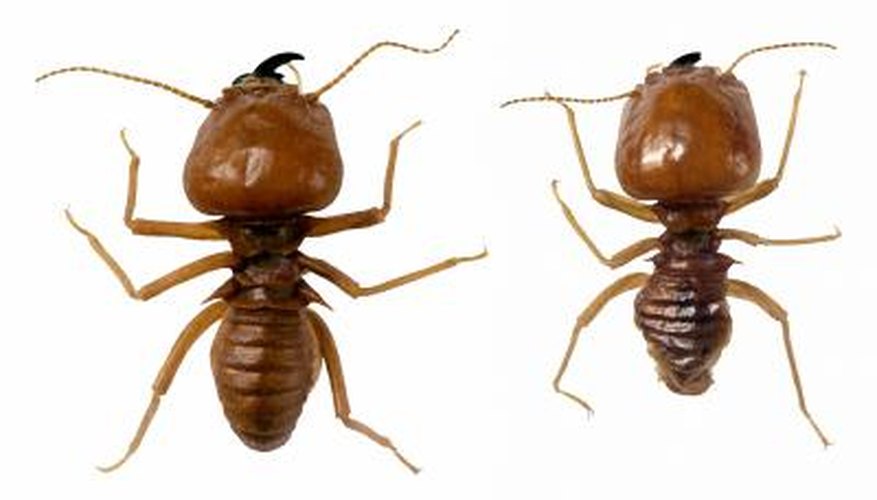Termites are vital recyclers in the tropical rainforest, where they feed on cellulose and soil. Tropical rainforests are warm and wet places with tall trees. In many places, it rains every day and the rain mixed with sunshine makes tropical rainforests burst with life. There is plenty of food in the rainforest and the decomposition rate is high. The termites have evolved many special features to adapt to different conditions in the rainforest.
What Is a Termite?
Termites are eusocial insects, which means that they are social insects like ants, bees and wasps. Termites resemble ants and they are often called white ants. Yet, ants and termites are not closely related and termites are regarded as more primitive. Termites may be more primitive than ants, but they have a complex colonial caste system with workers, solders and reproductive termites.
- Termites are eusocial insects, which means that they are social insects like ants, bees and wasps.
Biochemical Adaptations
Under the tall treetops in the rainforest, there are thick humus layers. The humus layers are made of dead leaves, roots and branches. Termites have adapted their stomachs so that they can extract cellulose from the soil humus. The stomach pH of some species of termites is the highest known alkalinity in a living organism. The pH can be higher than 12, where a pH of seven is neutral. Mostly there is a symbiotic protozoa (metamonads) and other microbes in the termites stomachs that help them digest the cellulose.
- Under the tall treetops in the rainforest, there are thick humus layers.
- Mostly there is a symbiotic protozoa (metamonads) and other microbes in the termites stomachs that help them digest the cellulose.
Body Changes
Termites that eat soil have evolved soft bodies. These termites spend most of their time in the soil and they live where they eat. However, the soft bodies make them susceptible to dehydration. Termites live in large colonies and they nest, feed and forage in microbially rich environments. Several adaptations to prevent the spread of disease has been made. Associate Professor Rebeca Rosengaus at Northeastern University in Boston says many of the adaptation made by termites are still unknown. However, termites use a range of mechanisms, such as behavioural, biochemical, immunological and social adaptations, to prevent infections in the nest.
- Termites that eat soil have evolved soft bodies.
- Termites live in large colonies and they nest, feed and forage in microbially rich environments.
Different Nests
Termites build nests in different shapes and sizes. The place chosen to build the nest is adapted to the conditions in the area. There are subterranean nests, which are nests in the soil where the termites eat. If you dig in the soil in the rainforests, you will often find termites. These termites are often pale or white and this could be an adaptation to living in dark soil. Some species build nests at ground level and there are several different shapes and building materials used to create big mounds. In areas susceptible to flooding, you can often see nests on the branches or trunks of trees. The direction where the termites build their nests varies and the compass termites (Amitermes meridionalis) in Australia build nests with a north-south axis. This may help to keep the temperature in the nest even.
- Termites build nests in different shapes and sizes.
- In areas susceptible to flooding, you can often see nests on the branches or trunks of trees.
